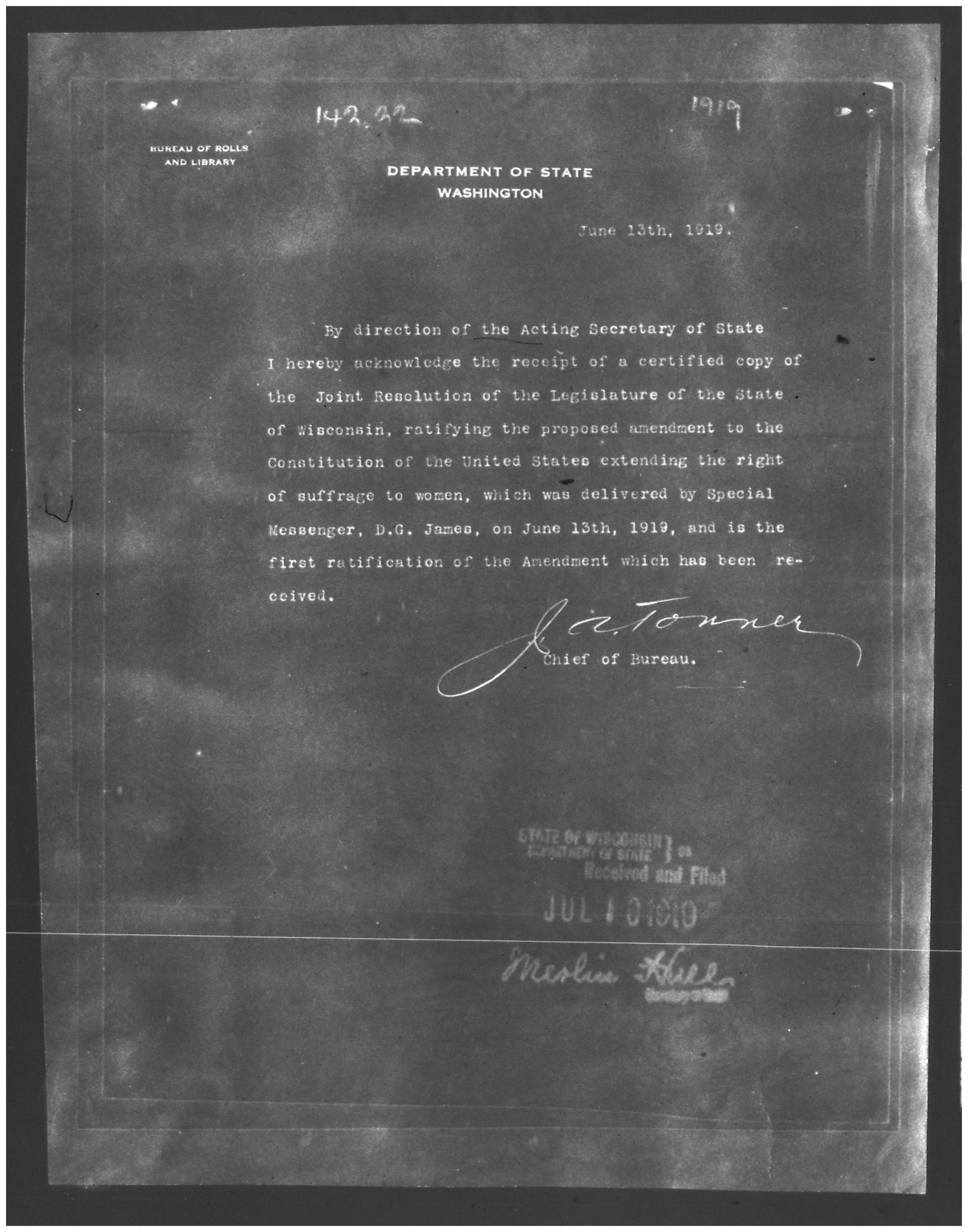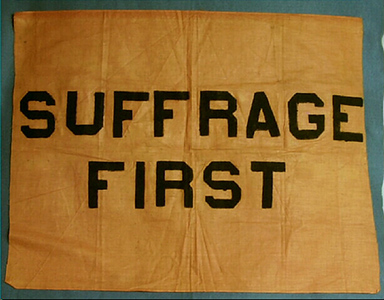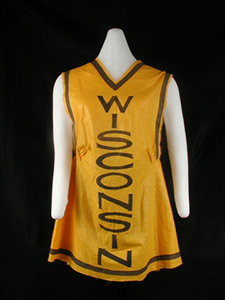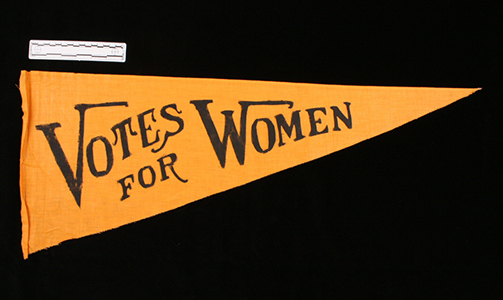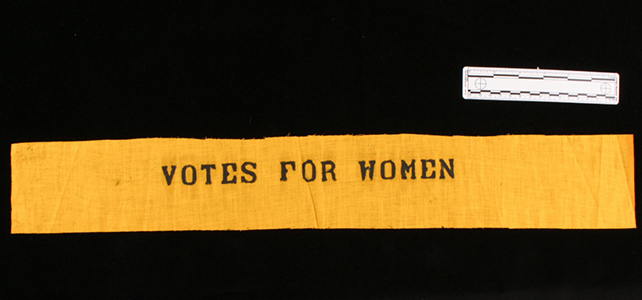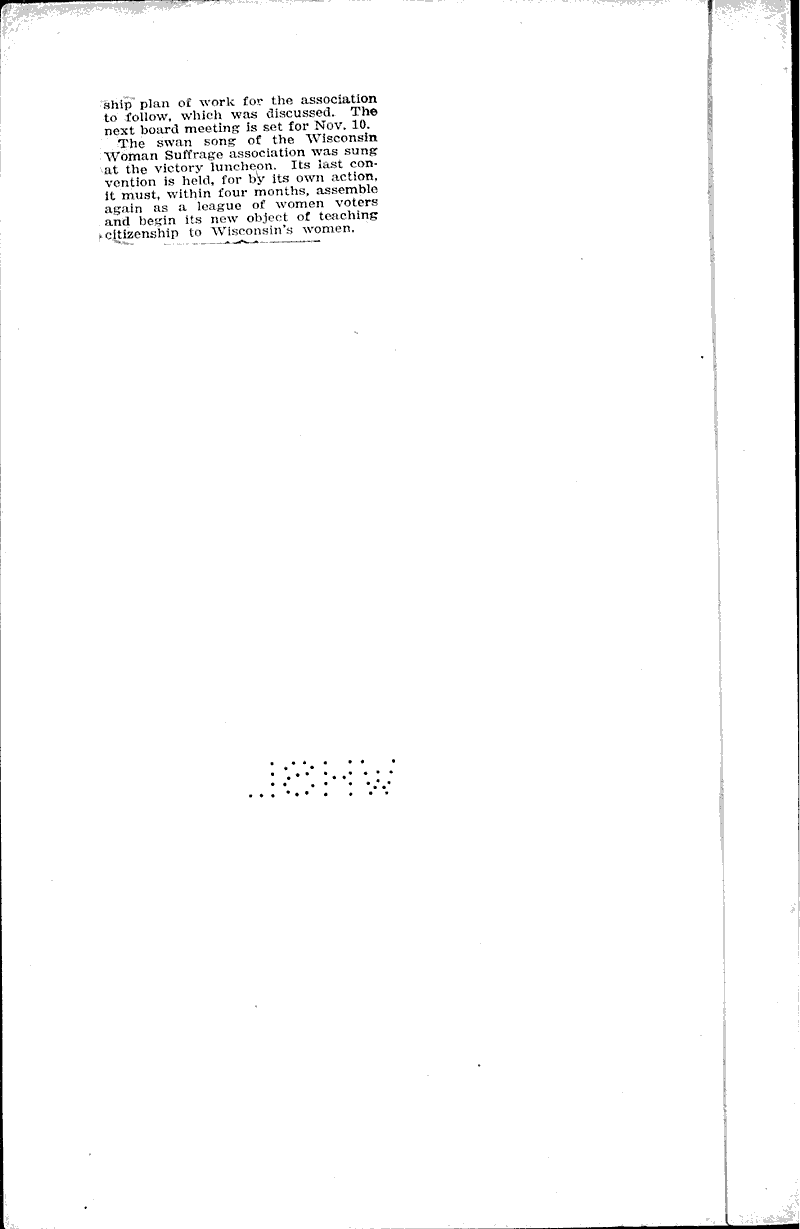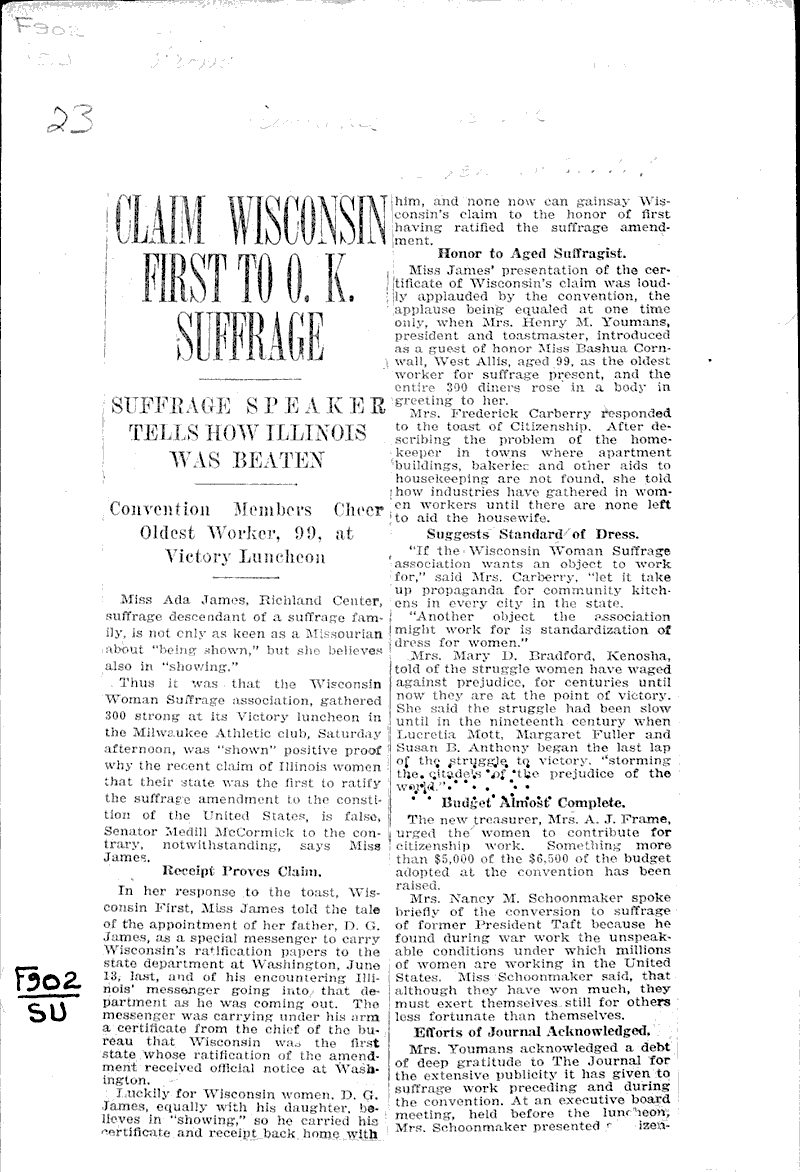The Story of the 19th Amendment
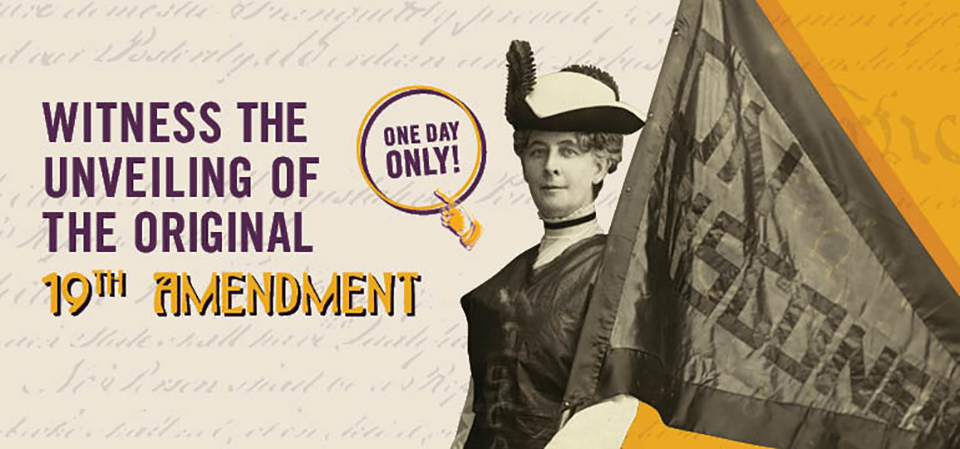
Wisconsin Rushes to Be First - the full story!
On the morning of June 10, 1919, 76-year-old former state senator David James of Richland Center came to Madison to witness the state legislature vote on the 19th Amendment. By day’s end, he was on a train racing to Washington, DC, with official ratification documents in hand. He needed to deliver the documents to the US State Department in order to make Wisconsin the first state to officially ratify the 19th Amendment.
David James and his daughter, Ada, gathered with other suffragists at the Wisconsin State Capitol that day determined that Wisconsin would be the first state to ratify. Ada described the day in her diary:
“Went to Madison and had an exciting time. We wanted our Legislature to ratify first but two Democrats played politics for over an hour and in the meantime Illinois telegraphed that they had ratified.”¹
Illinois completed their voting process about an hour and half before Wisconsin did, but Wisconsin suffragists did not give up. Ada wrote:
“Mrs. [Jessie Jack] Hooper did not give up, as it is the state that gets the papers on file first at Washington that counts. So they went to see the Governor [Emanuel L. Philipp] and he appointed dad a special messenger.”
David James later described his special appointment to the Milwaukee Sentinel:
“After the bill has passed and we were sharing congratulations, a committee came up to me and said I had been chosen as official messenger to go to Washington with the papers. ‘Why don’t you get a younger man?’ I asked, thinking they were joking. But they insisted, and my daughter urged me to take the commission, so finally I said I would and immediately set about preparations.”²
Mr. James was totally unprepared for a trip across the country. Wisconsin Secretary of State Merlin Hull gave him some money, Ada gave him her handbag, and off he went. Several days later, on June 13, 1919, he arrived at the US State Department clutching Wisconsin’s ratification papers. He recalled:
“We packed into a taxi and arrived at no time at the offices of the Secretary of State, where my papers were safely filed and I received a signed statement that Wisconsin was the first. . . . I returned to the Secretary of State’s just in time for the entrance of the messenger from Illinois. He walked up and slapped his papers down on the table. ‘I’ve brought papers to show Illinois was first,’ he said, and was interrupted by our peals of laughter.”
State legislatures in Illinois, Wisconsin, and Michigan all voted to ratify the 19th Amendment on June 10, 1919. While Illinois was the first state to vote for ratification, thanks to David James’s speedy trip, the US State Department recognized Wisconsin as the first state to complete the ratification process.
¹Ada James diary, 1918–1919 (Volume 20), Wis Mss OP MAD 3 /27/D7-E3, Box 28, Folder 4, Ada Lois James papers 1816–1952, Wisconsin Historical Society Archives, Madison, Wisconsin.
²“How Wisconsin Beat All Other States on Suffrage," Milwaukee Journal, June 16, 1919.

Explore important artifacts and documents from the Suffrage Collection!
Micro 848, reel 6, 1919 Scrapbook
Acknowledgment of the receipt of a certified copy of the Join Resolution of the Legislature of the State of Wisconsin, ratifying the proposed amendment to the Constitution of the United States.
The Bold Color of the Suffrage Movement
Supporters of women’s suffrage in Wisconsin and across the country used the color gold to symbolize the movement. The artifacts in these cases came from the Wisconsin Woman Suffrage Association and were used at parades and other events to carry their message in the 1910s.
Why gold? In 1867, Kansas considered its own suffrage referendum. National suffrage leaders Elizabeth Cady Stanton and Susan B. Anthony adopted the Kansas state flower, the distinctive sunflower, as the symbol of the effort. Eventually, supporters all over the United States carried or wore gold banners, tunics, pins, ribbons, and sashes.
Woman Suffrage Tunic
Tunic distributed by Theodora W. Youmans, president of the Wisconsin Woman Suffrage Association, and likely worn by a suffrage supporter during the Republican National Convention in Chicago, Illinois, 1916. WHS MUSEUM 1956.1453
Suffrage Sunflowers
Sunflower ornaments pinned to the clothing of suffrage supporters. WHS MUSEUM 1956.1461,a-b
Suffrage Pennant
Pennant carried by a suffrage supporter. WHS MUSEUM 1956.1466
Suffrage Sash
Sash that was carried or pinned to clothing. WHS MUSEUM 1956.1468b
Milwaukee Journal November 2, 1919
Milwaukee Journal article describing the tale that Wisconsin was the first state to ratify the 19th Amendment.
View all the Suffrage artifacts and documents in our collection!

